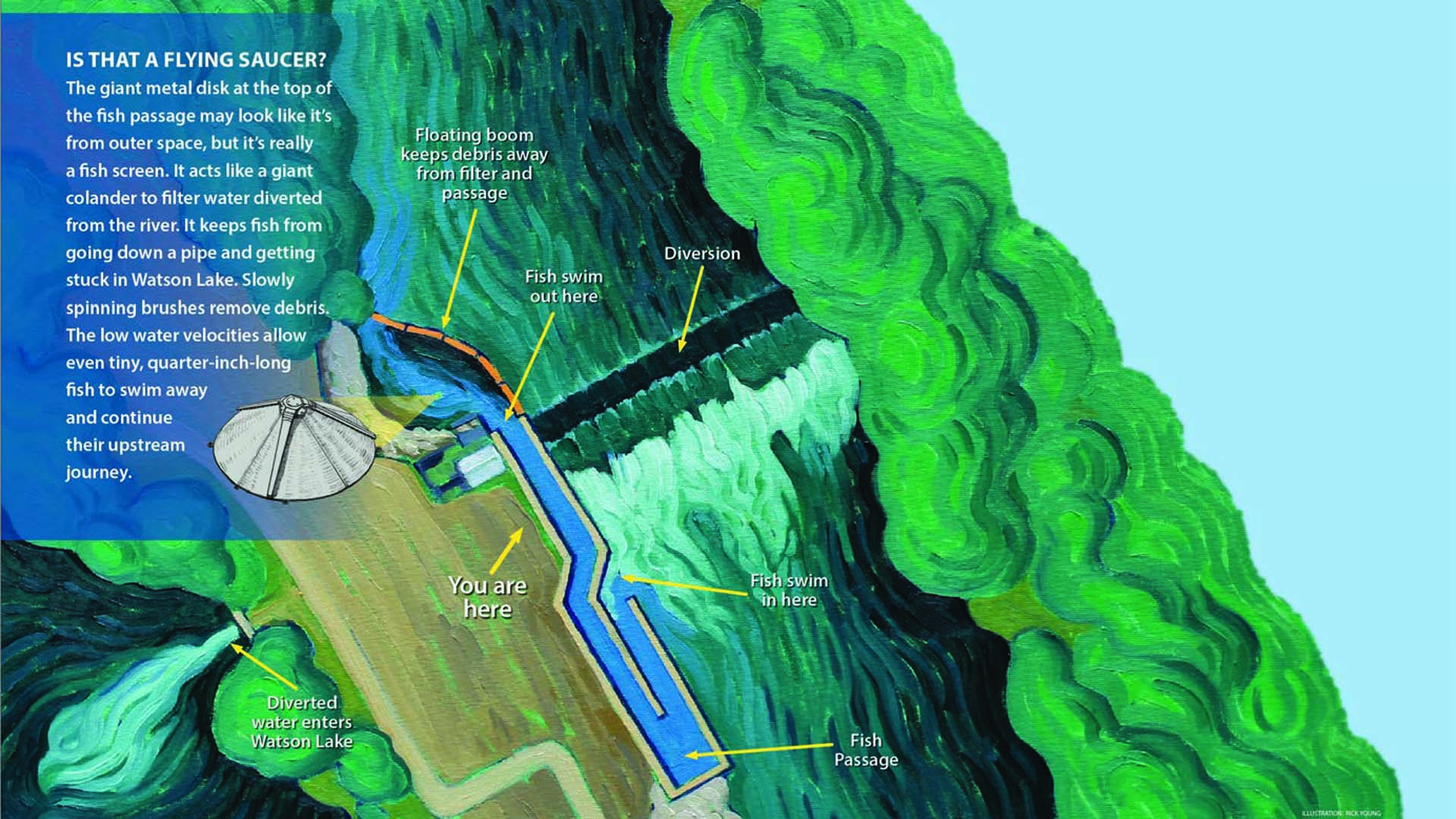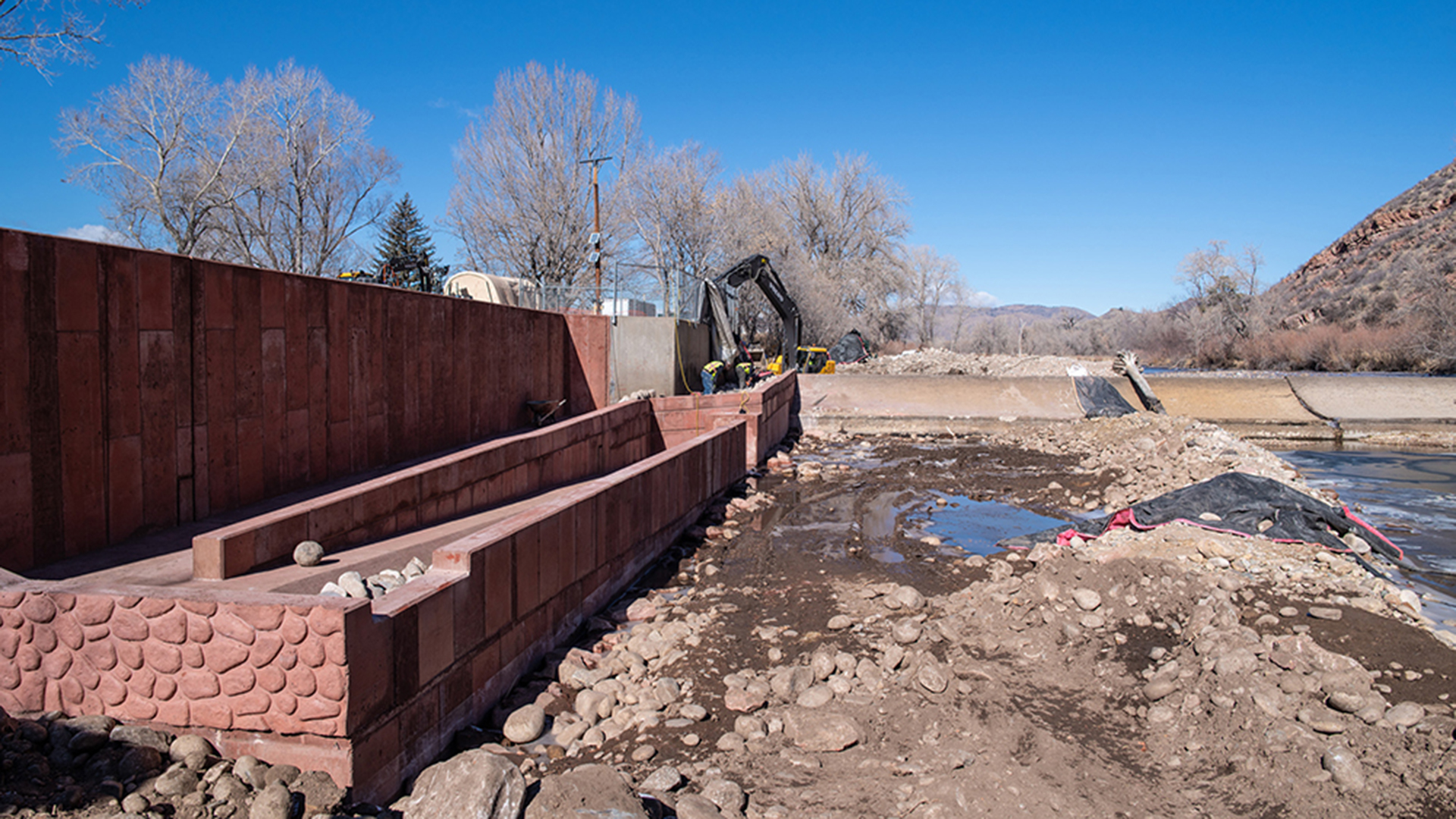Watson Lake Fish Bypass
Improving River Habitat
A collaborative effort among the participants of the Northern Integrated Supply Project, Morning Fresh Dairy, noosa yoghurt and Colorado Parks and Wildlife has improved the habitat on the Poudre River.
For years, the free movement of fish was hindered by the manmade water diversion structure adjacent to Watson Lake that shifts water from the Poudre River. The Watson Lake Fish Bypass – an $850,000 project completed in March 2019 – enables free fish movement around the bypass structure and fulfills one of the promises made by NISP participants to improve the Poudre River, as outlined in the NISP Fish and Wildlife Mitigation and Enhancement Plan.
Now, two segments of the river that had been disconnected by the diversion barrier are now reconnected, which improves several facets of that stretch: ecosystem health, angler access, public safety and public education.
Designed by OneFish Engineering, the fish bypass provides upstream fish movement through the diversion structure for all species present within the river reach, including longnose dace, longnose suckers, white suckers, brown trout and rainbow trout.
Additionally, the State Wildlife Area and Hatchery, where this project is located, receives a lot of visitors, whether they are fishermen, birders or families enjoying nature. Onsite educational material discussing the fish passage will be an important component of the project, providing a learning experience for school children and all other visitors.
Helping Fish Travel Upstream
The Watson Lake diversion structure has blocked fish from swimming upstream since the 1960s. By giving them a way around, this fish passage restores more natural conditions, improves the health of the fishery and reconnects two miles of valuable habitat. That means stronger fish populations and better fishing opportunities.
The gradual slope mimics natural river conditions. Pillars set in the bottom act like boulders to break up water flow. This keeps water moving slowly enough for the smallest, weakest fish to swim upstream against the current. Restoring more natural river dynamics helps both sportfish like trout, and native species like suckers and dace.
Helping Fish Travel Upstream
The Watson Lake diversion structure has blocked fish from swimming upstream since the 1960s. By giving them a way around, this fish passage restores more natural conditions, improves the health of the fishery and reconnects 2 miles of valuable habitat. That means stronger fish populations and better fishing opportunities. The gradual slope mimics natural river conditions. Pillars set in the bottom act like boulders to break up water flow. This keeps water moving slowly enough for the smallest, weakest fish to swim upstream against the current. Restoring more natural river dynamics helps both sportfish like trout, and native species like suckers and dace.


?width=1920&height=1080&ext=.jpg)
?width=1920&height=1080&ext=.jpg)
?width=1920&height=1080&ext=.jpg)
?width=1920&height=1080&ext=.jpg)
?width=1920&height=1080&ext=.jpg)
?width=1920&height=1080&ext=.jpg)
?width=1920&height=1080&ext=.jpg)
?width=1920&height=1080&ext=.jpg)
?width=1920&height=1080&ext=.jpg)
?width=1920&height=1080&ext=.jpg)